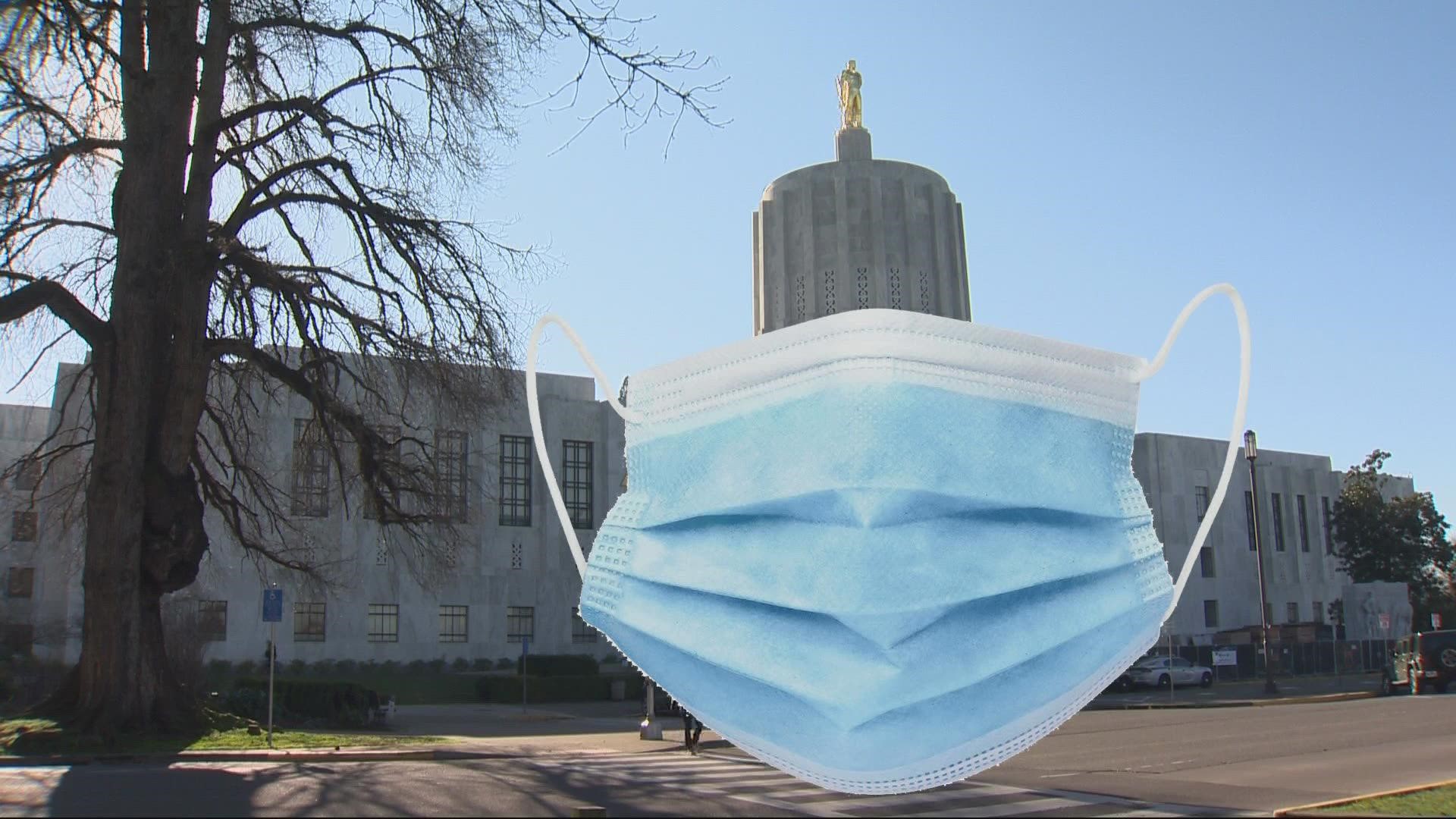SALEM, Ore. — With COVID case rates declining and hospitalizations leveling off, most of Oregon's indoor mask requirements are set to be lifted March 31 at the latest, state health officials announced on Monday.
The mandate will be lifted for indoor public spaces and K-12 schools on March 31, but it will remain in place for health care settings, according to state health officer and epidemiologist Dr. Dean Sidelinger.
He said state health officials would consider lifting the mask requirement sooner than March 31 if hospitalizations decline to projected levels sooner than expected. In that case, K-12 schools would adhere to the March 31 date to give districts time to plan.
Once the rules are lifted, individual businesses will still have the option to mandate masks for their staff or customers, Sidelinger said, but they won't be required to do so anymore. The same applies for individual school districts after March 31.
Individuals and communities will need to make masking decisions for themselves, he said, and added that he hoped businesses would continue to support individual Oregonians' choices to wear masks in public settings.
“Going forward, after March 31, you need to look at what conditions are like on the ground," he said.
When asked how likely the state would revert back to a masking requirement, Sidelinger said a return to mandatory masking was unlikely because of the wide availability of vaccines and boosters, as well as preventative medicines that are being developed and distributed.
State health officials said people who have a higher health risk should consider continuing to mask up even after the masking requirement is lifted.
The current mask rules were put in place in August when the delta variant caused a major wave of new cases and sent hospitalizations surging to record levels, threatening to overwhelm the state's health care system.
Cases and hospitalizations gradually declined in the fall months, and by late November the Oregon Health Authority was facing questions about why it hadn't announced any metrics or timeline to lift the mandate.
The question became less relevant a couple weeks later when the omicron variant arrived and created an unprecedented case surge, pushing hospitalization rates back up to just shy of the delta wave peak.
Initial forecasts predicted that omicron hospitalization rates would eclipse those of the delta wave, and state health officials attributed the improved outcome in part to Oregonians' high compliance with the mask rule, which helped slow the speed of transmission.
The state now appears to be past the peak of the omicron wave; daily cases have been declining steadily from an all-time high of 10,490 on Jan. 20, and hospitalization rates have leveled off in the past week.
If current trends continue, health scientists predict that Oregon will have 400 or fewer COVID hospitalizations by the end of March, according to a press release from the Oregon Health Authority, meaning the state will have reverted back where things stood before the omicron wave began.
Oregon Health Authority filed a new "permanent" indoor mask rule with the Secretary of State on Monday, replacing a previous temporary version.
Read the full text of OHA's permanent mask rule:
The temporary rule currently in place will hit its built-in six-month expiration date on Tuesday, and under Oregon law the agency isn't allowed to extend it — it must be either lifted immediately or made officially permanent. The agency enacted a permanent masking rule in K-12 schools last week for the same reason.
The "permanent" designation doesn't mean the rule will be in place forever, but it means it no longer has a prescribed expiration date and can continue until health officials determine that it's safe to lift it.
We're not there yet, Sidelinger said, because even though it's stopped going up, the current hospitalization rate remains stubbornly high.
“Right now there are over a thousand Oregonians in the hospital with COVID… so having these requirements in place for the next several weeks is important," he said.
Many parents, frustrated by fluctuating mandates questioned the need to follow those metrics for ending mask mandates in schools.
“What is the data that we should have masks on for the next two months? What's magic about March 31st?” asked parent, Kim McGair. She had mixed emotions about Monday's announcement.
“When I think about masks in schools it’s the [littlest children] that just really break my heart, said McGair. "I hope and pray that this really happens on the 31st and they can at least have some portion of this school year where they can see faces and frowns and smiles and hear their teachers.”

